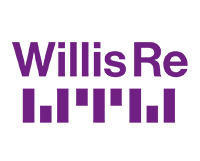Despite higher net income, the aggregate shareholders’ equity of the Index reduced as reinsurers continued to return capital to investors through dividends and share buy-backs, which totalled $11.1 billion at H1, 2018. Shareholders’ equity was also reduced by unrealised investment depreciation of $8.3 billion which was due in part to rising interest rates. Alternative capital increased to $88 billion from $75 billion at H1, 2017.
The Subset2 reported an RoE of 8.5%, broadly unchanged from 8.4% at H1, 2017. Reserve releases continued to provide substantial support to the reported RoE for the Subset of 2.0 percentage points (H1, 2017: 1.9 percentage points). If normalised for a more typical catastrophe load (equivalent to a c. 4% impact on RoE) and excluding the benefit provided by reserve releases, underlying profitability for the Subset deteriorated further to 3.4% at H1, 2018, continuing the downward trend from 4.9% at H1, 2015 to 4.5% at H1, 2016 to 3.7% at H1, 2017.
As a new analysis, Willis Re reviewed the approximate movements in 2017 Natural Catastrophe loss estimates from year-end 2017 to H1, 2018. The analysis showed that the majority of reinsurers reported reserve releases at H1, 2018 due to a lowering in their estimates for 2017 natural catastrophe losses compared to their figures reported at year-end 2017.
James Kent, Global CEO, Willis Re, said: “Hopes for a hard market after the natural catastrophe losses of 2017 were not satisfied, but property cat pricing did rise overall during the first half of the year. Reinsurers are correcting prices when necessary, and leveraging their continuously improving analytics and data. They are pricing more precisely, which is making the swings of the reinsurance pricing cycle shallower. This we believe to be the new normal.”
He continued: “Despite a small decline in conventional reinsurers’ capital, the increase in non-traditional investment in our market means that global reinsurance capital is slightly higher than at the same time last year. Many reinsurance investment funds have increased their 2018 assets under management, which limited price rises after the Harvey, Irma and Maria losses, particularly in Florida. Notably, we found that 11 reinsurers reported reserve releases at H1, 2018 after they lowered their 2017 catastrophe loss estimates, but six had to add to their reserves. Looking ahead, longer-term reserve releases must be reaching exhaustion, which may have a deleterious effect on future results.”
Download the full report: The Willis Re Reinsurance Market Report is a biannual publication providing in-depth analysis of the size and performance of the reinsurance market. Analysis is based on the Willis Reinsurance Index group of companies. The Index includes 34 companies from across the globe.
About Willis Towers Watson
Willis Towers Watson is a leading global advisory, broking and solutions company that helps clients around the world turn risk into a path for growth. With roots dating to 1828, Willis Towers Watson has over 40,000 employees serving more than 140 countries. We design and deliver solutions that manage risk, optimize benefits, cultivate talent, and expand the power of capital to protect and strengthen institutions and individuals. Our unique perspective allows us to see the critical intersections between talent, assets and ideas – the dynamic formula that drives business performance. Together, we unlock potential.













